Do you have a question about the CF MOTO Z FORCE 800 Trail and is the answer not in the manual?
Provides a welcome message and overview of the manual's contents and company information.
Explains the meaning of safety alert words like DANGER, WARNING, CAUTION, and NOTICE used in the manual.
Details how to record vehicle identification numbers and key information for reference.
Lists detailed technical specifications for different ZFORCE models, including dimensions and capacities.
Outlines essential safety rules and warnings for operating the vehicle safely.
Specifies the minimum age requirements for operating the vehicle and carrying passengers.
Emphasizes operator responsibility for understanding vehicle operation and safety procedures.
Advises against installing unauthorized accessories that may affect vehicle safety or performance.
Warns about the dangers of carbon monoxide and provides steps to prevent poisoning.
Provides crucial safety instructions for handling gasoline and preventing fires.
Specifies the recommended fuel type and octane rating for optimal performance.
Warns about hot engine and exhaust components to prevent burns.
Details operator duties, including qualification and responsible operation.
Provides guidelines and restrictions for carrying passengers safely.
Offers advice on safe riding practices to avoid accidents and rollovers.
Explains the function and importance of the ROPS for occupant safety.
Describes the importance and use of seat belts and side nets/doors.
Advises on safe operation practices for various terrain types.
Recommends essential protective gear for safe operation.
Guides users on locating and understanding safety labels on the vehicle.
Highlights potential hazards and how to avoid them, covering various scenarios.
Details components like cab frame, seat belts, and handrails for occupant safety.
Explains the vehicle's hitch receiver and winch components.
Describes the location and removal of various access covers for maintenance.
Covers essential controls like steering wheel, throttle, and brake pedals.
Explains secondary controls such as dimmer, horn, override, hazard, and mode switches.
Details how to select between 2WD, 4WD, and 4WD-LOCK modes.
Explains the operation of the turn signal switch.
Covers additional features like cargo box, fuel cap, seats, and tool kits.
Explains the Continuously Variable Transmission system and its components.
Provides tips to prevent damage to the CVT belt and clutch.
Explains the various indicators and warning lights on the vehicle's dashboard.
Guides on the recommended procedures for breaking in a new engine.
Provides a chart for selecting the correct engine oil viscosity based on ambient temperature.
Details essential checks to perform before operating the vehicle.
Explains the function and operation of the electronic throttle pedal.
Describes how to use the foot brake and what a soft pedal might indicate.
Provides step-by-step instructions for starting the engine safely.
Explains the procedures for shifting gears and transmission precautions.
Outlines the operator's duties for safe and responsible vehicle operation.
Recommends practicing basic maneuvers like turning and braking in a controlled environment.
Covers off-road operation, driving tips, and reverse operation procedures.
Provides guidance on carrying loads, vehicle settings, and load distribution.
Explains the safe operation, precautions, and maintenance of the vehicle's winch.
Details procedures for self-recovery and recovering other vehicles using the winch.
Defines conditions considered severe use and their impact on service intervals.
Highlights essential lubrication points and intervals.
Lists inspections to perform before operating the vehicle.
Outlines maintenance tasks to be performed after the initial break-in period.
Provides a schedule for regular maintenance intervals.
Offers a log for recording inspection and service history.
Details specific maintenance tasks like air filter inspection and cleaning.
Explains how to check engine and transmission oil levels.
Provides step-by-step instructions for changing the engine oil and filter.
Details the procedure for changing the transmission oil.
Explains the importance of valve clearance and when adjustment is needed.
Discusses engine idle speed and when to contact a dealer for issues.
Covers inspection and oil change procedures for front and rear gear cases.
Advises on checking axle boots for damage before driving.
Guides on draining and drying the CVT housing if water enters.
Explains how to inspect and change the coolant level.
Provides steps for draining and refilling the cooling system.
Covers inspection, removal, and gap adjustment of spark plugs.
Details steps to remove water from the engine via spark plug holes.
Explains how to clean and inspect the spark arrestor.
Covers battery location, maintenance, removal, and installation.
Details brake fluid level inspection and pad inspection.
Explains when and how brake fluid should be changed.
Describes how to check the proper functioning of the brake light.
Mentions that front suspension components require minimal maintenance.
Guides on lubricating suspension pivot points and adjusting components.
Explains how to adjust spring preload for different riding conditions.
Details how to adjust spring preload on 950 models.
Explains how to adjust suspension compression damping for ride quality.
Covers tire pressure checks and tread depth inspection.
Provides instructions for removing and installing vehicle wheels.
Advises on checking wheel bearings for play or looseness.
Details the fuse box, fuses, and relays.
Explains how to adjust headlight high and low beams.
Notes that LED lamps are not repairable and require dealer replacement.
Guides on fastening and inspecting the 3-point seat belts.
Provides guidelines for safely cleaning the vehicle.
Recommends using non-abrasive wax for vehicle finish protection.
Advises making necessary repairs before storing the vehicle.
Recommends inspecting tire treads and pressure.
Mentions changing oil and filter before storage.
Suggests inspecting and cleaning the air filter and air box.
Lists essential fluid levels to check and when to change them.
Explains how to stabilize fuel for longer storage periods.
Provides instructions for storing the battery properly.
Recommends lubricating cables and pivot points.
Details the procedure for fogging the engine for storage.
Advises on proper storage area conditions and cover selection.
Outlines procedures for safely transporting the vehicle.
Lists possible causes and solutions for an engine that won't turn over.
Identifies potential causes for engine pinging or knocking.
Provides diagnostic steps for common engine stop or power loss issues.
Lists potential causes and troubleshooting steps for an engine that cranks but won't start.
Identifies causes and solutions for engine backfiring.
Explains the EFI warning light and recommended actions.
Details the EPS warning light and troubleshooting guidance.
Offers solutions for common EPS system faults.
Covers warranty transfer and general information.
Outlines the duration, limitations, and exclusions of the limited warranty.
Explains the specific warranty rights and owner responsibilities for emissions control systems.
Details the warranty period and coverage for evaporative emissions control components.
Outlines the owner's obligations regarding maintenance and record-keeping.
Explains the warranty for vehicle components related to emissions control.
Warns against tampering with noise control systems and outlines federal law prohibitions.
Provides a welcome message and overview of the manual's contents and company information.
Explains the meaning of safety alert words like DANGER, WARNING, CAUTION, and NOTICE used in the manual.
Details how to record vehicle identification numbers and key information for reference.
Lists detailed technical specifications for different ZFORCE models, including dimensions and capacities.
Outlines essential safety rules and warnings for operating the vehicle safely.
Specifies the minimum age requirements for operating the vehicle and carrying passengers.
Emphasizes operator responsibility for understanding vehicle operation and safety procedures.
Advises against installing unauthorized accessories that may affect vehicle safety or performance.
Warns about the dangers of carbon monoxide and provides steps to prevent poisoning.
Provides crucial safety instructions for handling gasoline and preventing fires.
Specifies the recommended fuel type and octane rating for optimal performance.
Warns about hot engine and exhaust components to prevent burns.
Details operator duties, including qualification and responsible operation.
Provides guidelines and restrictions for carrying passengers safely.
Offers advice on safe riding practices to avoid accidents and rollovers.
Explains the function and importance of the ROPS for occupant safety.
Describes the importance and use of seat belts and side nets/doors.
Advises on safe operation practices for various terrain types.
Recommends essential protective gear for safe operation.
Guides users on locating and understanding safety labels on the vehicle.
Highlights potential hazards and how to avoid them, covering various scenarios.
Details components like cab frame, seat belts, and handrails for occupant safety.
Explains the vehicle's hitch receiver and winch components.
Describes the location and removal of various access covers for maintenance.
Covers essential controls like steering wheel, throttle, and brake pedals.
Explains secondary controls such as dimmer, horn, override, hazard, and mode switches.
Details how to select between 2WD, 4WD, and 4WD-LOCK modes.
Explains the operation of the turn signal switch.
Covers additional features like cargo box, fuel cap, seats, and tool kits.
Explains the Continuously Variable Transmission system and its components.
Provides tips to prevent damage to the CVT belt and clutch.
Explains the various indicators and warning lights on the vehicle's dashboard.
Guides on the recommended procedures for breaking in a new engine.
Provides a chart for selecting the correct engine oil viscosity based on ambient temperature.
Details essential checks to perform before operating the vehicle.
Explains the function and operation of the electronic throttle pedal.
Describes how to use the foot brake and what a soft pedal might indicate.
Provides step-by-step instructions for starting the engine safely.
Explains the procedures for shifting gears and transmission precautions.
Outlines the operator's duties for safe and responsible vehicle operation.
Recommends practicing basic maneuvers like turning and braking in a controlled environment.
Covers off-road operation, driving tips, and reverse operation procedures.
Provides guidance on carrying loads, vehicle settings, and load distribution.
Explains the safe operation, precautions, and maintenance of the vehicle's winch.
Details procedures for self-recovery and recovering other vehicles using the winch.
Defines conditions considered severe use and their impact on service intervals.
Highlights essential lubrication points and intervals.
Lists inspections to perform before operating the vehicle.
Outlines maintenance tasks to be performed after the initial break-in period.
Provides a schedule for regular maintenance intervals.
Offers a log for recording inspection and service history.
Details specific maintenance tasks like air filter inspection and cleaning.
Explains how to check engine and transmission oil levels.
Provides step-by-step instructions for changing the engine oil and filter.
Details the procedure for changing the transmission oil.
Explains the importance of valve clearance and when adjustment is needed.
Discusses engine idle speed and when to contact a dealer for issues.
Covers inspection and oil change procedures for front and rear gear cases.
Advises on checking axle boots for damage before driving.
Guides on draining and drying the CVT housing if water enters.
Explains how to inspect and change the coolant level.
Provides steps for draining and refilling the cooling system.
Covers inspection, removal, and gap adjustment of spark plugs.
Details steps to remove water from the engine via spark plug holes.
Explains how to clean and inspect the spark arrestor.
Covers battery location, maintenance, removal, and installation.
Details brake fluid level inspection and pad inspection.
Explains when and how brake fluid should be changed.
Describes how to check the proper functioning of the brake light.
Mentions that front suspension components require minimal maintenance.
Guides on lubricating suspension pivot points and adjusting components.
Explains how to adjust spring preload for different riding conditions.
Details how to adjust spring preload on 950 models.
Explains how to adjust suspension compression damping for ride quality.
Covers tire pressure checks and tread depth inspection.
Provides instructions for removing and installing vehicle wheels.
Advises on checking wheel bearings for play or looseness.
Details the fuse box, fuses, and relays.
Explains how to adjust headlight high and low beams.
Notes that LED lamps are not repairable and require dealer replacement.
Guides on fastening and inspecting the 3-point seat belts.
Provides guidelines for safely cleaning the vehicle.
Recommends using non-abrasive wax for vehicle finish protection.
Advises making necessary repairs before storing the vehicle.
Recommends inspecting tire treads and pressure.
Mentions changing oil and filter before storage.
Suggests inspecting and cleaning the air filter and air box.
Lists essential fluid levels to check and when to change them.
Explains how to stabilize fuel for longer storage periods.
Provides instructions for storing the battery properly.
Recommends lubricating cables and pivot points.
Details the procedure for fogging the engine for storage.
Advises on proper storage area conditions and cover selection.
Outlines procedures for safely transporting the vehicle.
Lists possible causes and solutions for an engine that won't turn over.
Identifies potential causes for engine pinging or knocking.
Provides diagnostic steps for common engine stop or power loss issues.
Lists potential causes and troubleshooting steps for an engine that cranks but won't start.
Identifies causes and solutions for engine backfiring.
Explains the EFI warning light and recommended actions.
Details the EPS warning light and troubleshooting guidance.
Offers solutions for common EPS system faults.
Covers warranty transfer and general information.
Outlines the duration, limitations, and exclusions of the limited warranty.
Explains the specific warranty rights and owner responsibilities for emissions control systems.
Details the warranty period and coverage for evaporative emissions control components.
Outlines the owner's obligations regarding maintenance and record-keeping.
Explains the warranty for vehicle components related to emissions control.
Warns against tampering with noise control systems and outlines federal law prohibitions.
| Brand | CF MOTO |
|---|---|
| Model | Z FORCE 800 Trail |
| Category | Offroad Vehicle |
| Language | English |

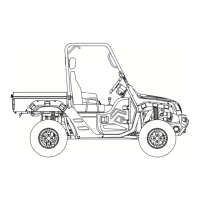
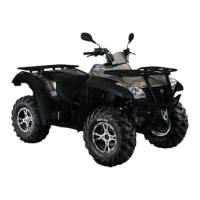
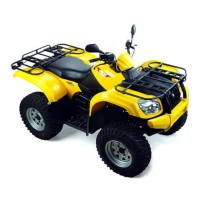
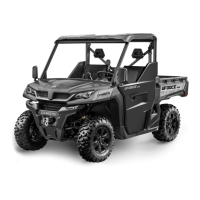
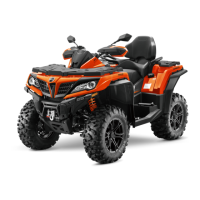
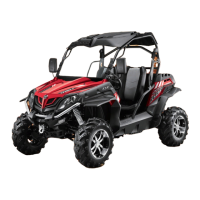
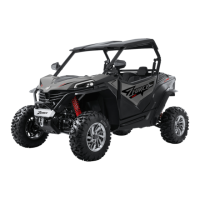
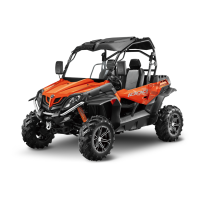
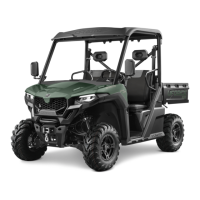

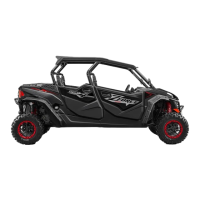
